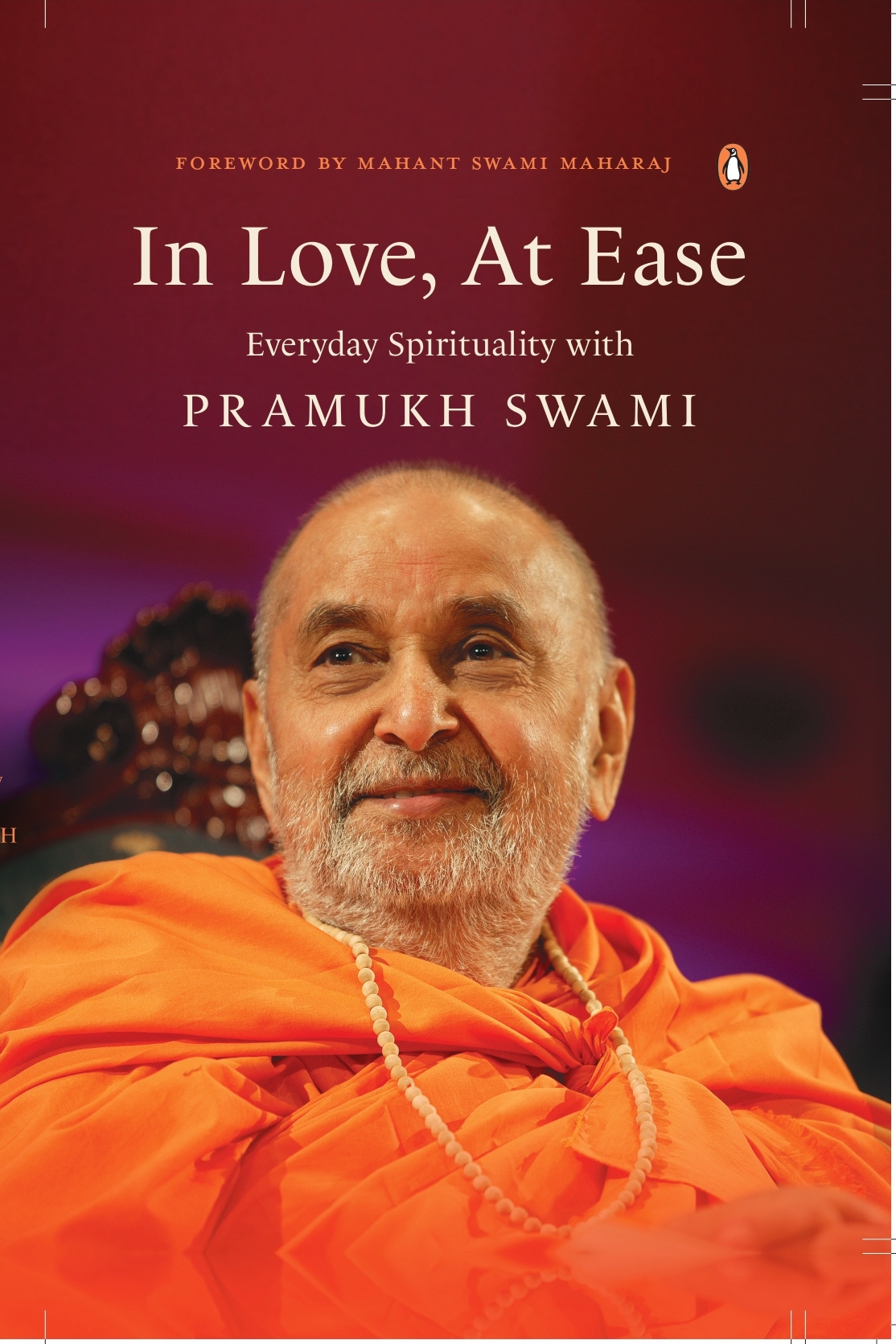
In Love, At Ease: Everyday Spirituality with Pramukh Swami (Penguin India) by Yogi Trivedi is a unique life story of a global cultural ambassador and a spiritual master, Pramukh Swami, the guru and Pramukh, or President, of the Bochasanwasi Akshar Purushottam Swaminarayan Sanstha, a major branch of the Swaminarayan Sampradaya that runs the Akshardham temples across the world. We got talking to Prof. Yogi Trivedi, a scholar of media and religion at Columbia University, a Fulbright Scholar, about this book that takes you on a journey from the foothills of the Himalayas to Syrian refugee camps with anecdotes, history lessons, and poetry that are relatable to teens and youth looking for answers on human interaction, spiritual progress, and overall development.
Q. What is the vision of Swaminarayan Sampradaya?
A. The Swaminarayan Sampradaya originated in Gujarat in the late eighteenth and early nineteenth century, when Sahajanand Swami or Shri Swaminarayan founded a community within the lineage of bhakti sampradayas of India. It was a unique moment due to the prevalent religious, cultural, and political forces in the region. Christian Missionaries, other bhakti sampradayas, the Sapanthis and Ismailis, the Jains, the Shaivas, and the Shaktas were all present in the region. Shri Swaminarayan bounds a community that incorporated elements from its neighbours while adhering to Hindu traditions. He also taught respect for these various communities within his own community. It was a moment in which he transmitted tradition, accepted adaptation and innovation, and gave space to an identity that was similar and yet different to those around him. Bhakti, pluralism, and social reform were important parts of the early years. Later, schools and cultural centres, humanitarian projects in marginalised communities, and ornate stone temples as architectural wonders became intertwined with the growing community’s identity. The Swaminarayan community became one of the predominant faces of Hinduism in East Africa, the United Kingdom, and later North America. It was this message of accepting and embracing that was the central message of its founder.
Q. Pramukh Swami Maharaj is known to bring people of all beliefs together; how do you view this in the current times of polarisation?
A. There is a picture in the book that captures who Pramukh Swami was and how he strived to bring people together. Well, there are a few. In one, he is sitting outside a mud and straw hut with a few tribal villagers in Gujarat. In another, he is giving his own eyeglasses to a rural villager who needs a new pair of specs. And, most importantly, he is standing in the middle of a group of leaders who would never otherwise share a dais together. And it goes beyond that, in my own journey as a scholar and journalist, my guru always encouraged me to engage and learn with an open mind. He would always remind me to learn without bias or preconceived notions. For him, religion and spirituality were not means to draw lines or create boundaries, but rather a means to build bridges and engage with everyone. In Chapter 4 of the book, I speak of how he transcended his own identity as a saffron-clad, Hindu monk to love, care for, provide for, and embrace people of all colours, ethnicities, religious backgrounds, social classes, and castes. It almost seems like a fairytale, given the current global climate. As an American of Indian origin, and one who has travelled to a few dozen countries, I can see the polarisation in all societies. I think Pramukh Swami’s everyday spirituality is a breath of fresh air—a roadmap of how to be proud of where one comes from and yet equally love, respect, and admire those who come from elsewhere. I believe he was able to do this because he did not see people through their external appearances or identities. He saw the Divine at the core of all of those around him.
Q. How did you come into the fold of the same?
A. My involvement occurred in New York in the early 1980s. I wear a few different hats. As a former journalist and scholar of media and religion, I often ask difficult historical and sociological questions about the community and its formation. As a trained bhakti musician, author, and someone who travelled with Pramukh Swami over a period of several years, I try to understand and articulate his vision of Shri Swaminarayan and his message of love, reform, acceptance, pluralism, and everyday spirituality in this book. As a believer and person of faith, I try to live by those lessons in my journey. As I say in the book, I took my first steps in front of the guru. I even had my first fall in his presence. The support, space, and open-mindedness he showed over the decades became the foundation for my engagement with the world around me.
As told to Lipika Bhushan, senior publishing professional, founder MarketMyBook and children’s author.